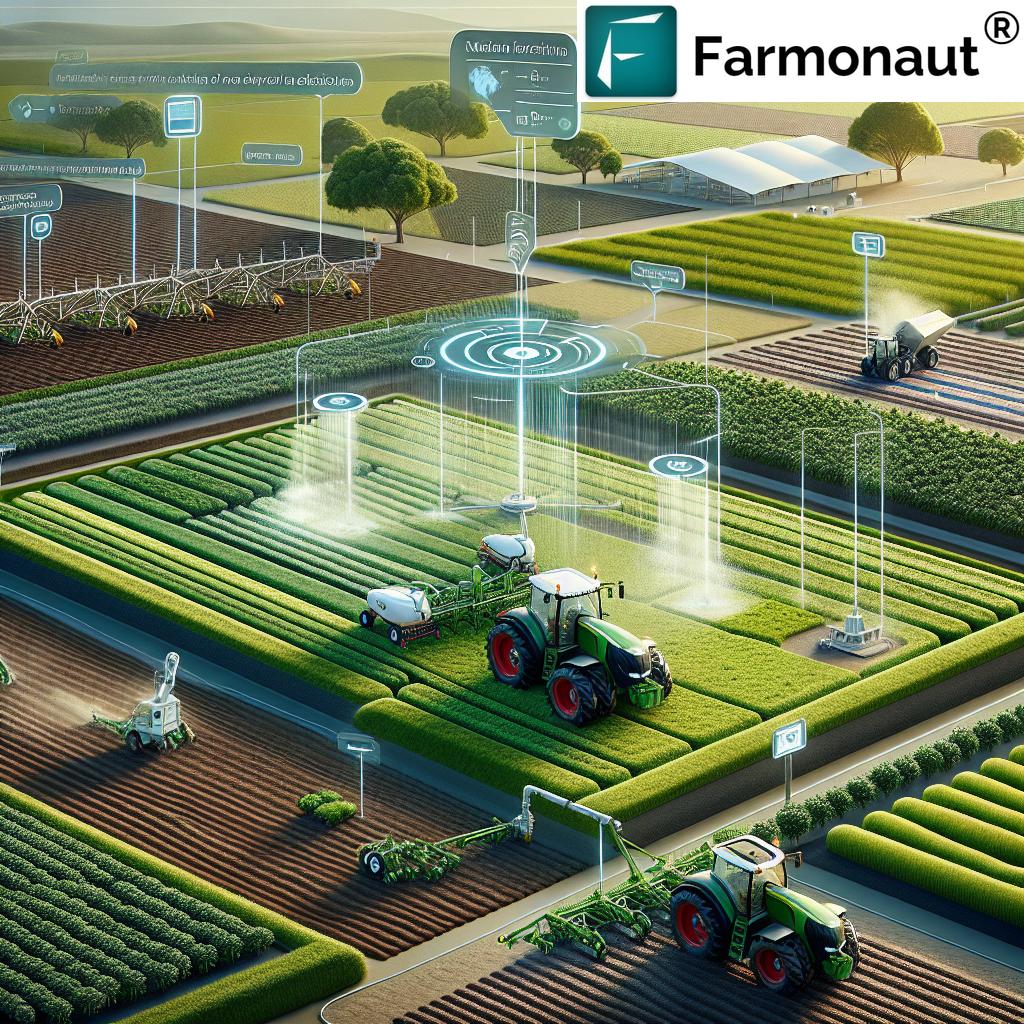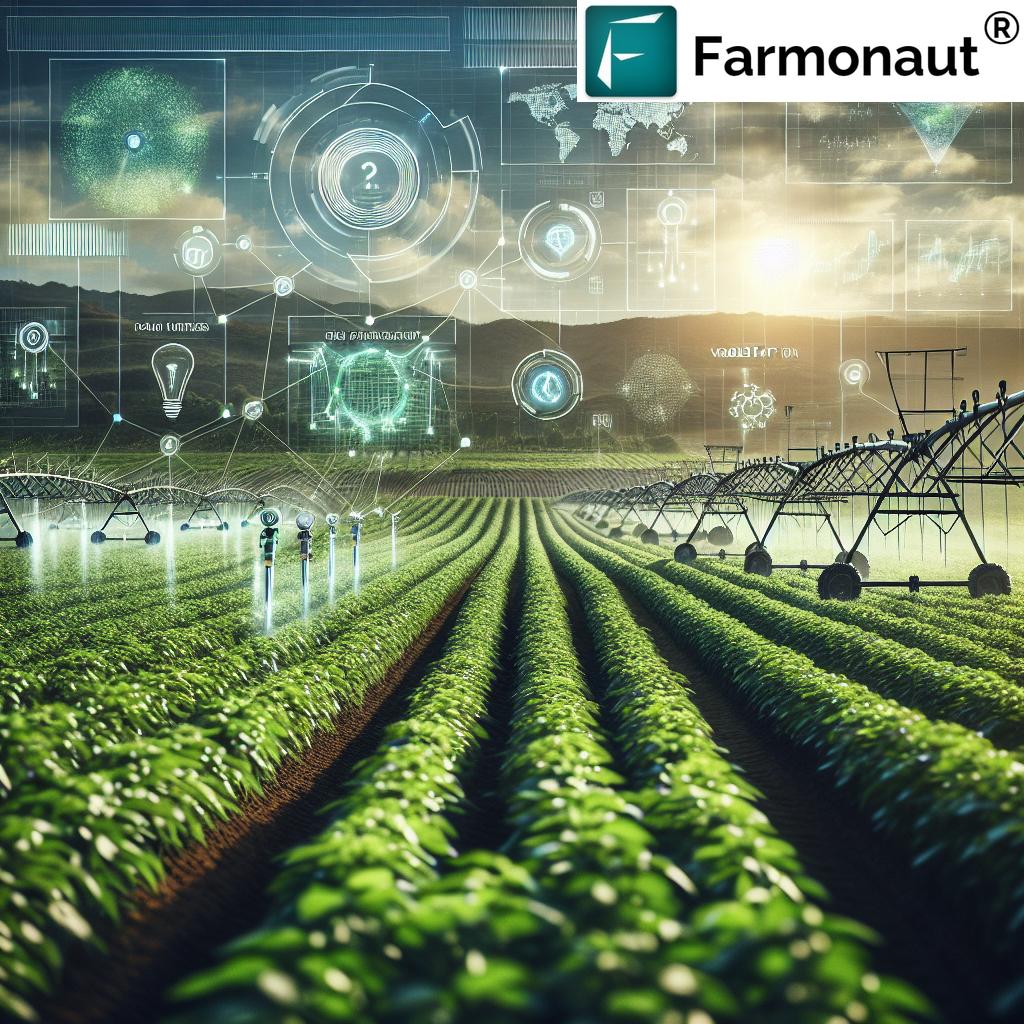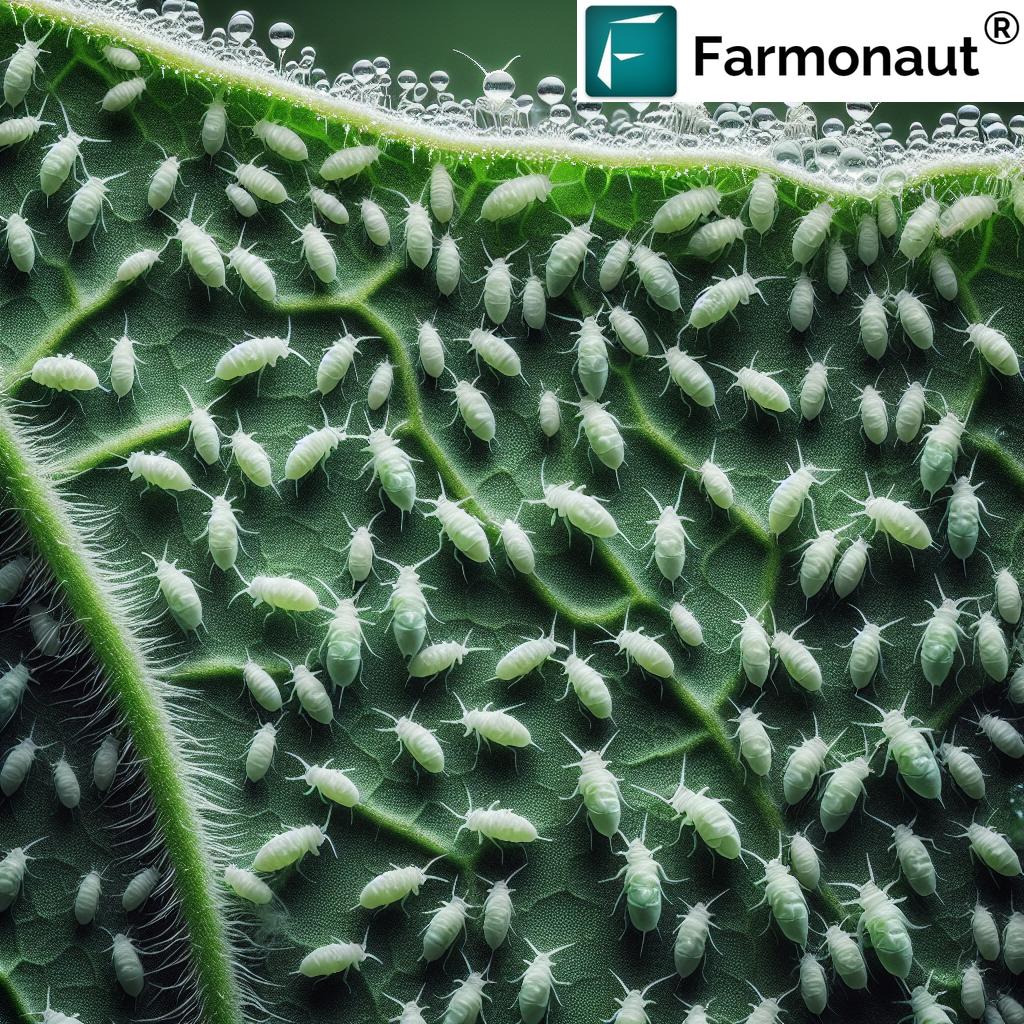Advanced Farming Tools 2025: Next‑Gen AI & CRM
Meta description: Advanced farming tools 2025—robotics, edge AI, sensing, genomics, and agriculture CRM development—are reshaping how crops are grown, managed, and marketed with higher yields, lower inputs, and faster climate adaptation.
URL hint: Keep it concise and descriptive, for example: /advanced-farming-tools-2025-ai-crm
“In 2025, edge AI enables sub-50 ms on-field crop stress detection via multispectral sensing and robotics.”
Advanced farming tools 2025 are moving from pilot projects to operational deployments. This next generation blends robotics, edge AI, high-resolution sensing, and agriculture CRM development to deliver higher yields, lower inputs, and faster responses to climate extremes. From fleets of autonomous tractors and harvesters to geospatially aware, integrated platforms, the ecosystem of advanced tools is reshaping how crops are grown, managed, and marketed.
- What “Advanced Farming Tools 2025” Really Means
- Robotics and Autonomous Systems: From Tillage to Harvesting
- Sensing, IoT Networks, and Edge AI: Faster, Targeted Decisions
- Genomics and Precision Breeding: Traits, Cycles, and Integrated Management
- Agriculture CRM Development: Platforms that Marry Data, Operations, and Markets
- Sustainability, Regenerative Practices, and Climate Resilience
- Interoperability, Data Ownership, Equity, and Regulation
- ROI Guide: Comparison Matrix for AI, Robotics, Sensing, Genomics, and Ag‑CRM
- Implementation Roadmap for Farms in 2025+
- FAQ: Advanced Farming Tools 2025
Defining “Advanced Farming Tools 2025”: An Integrated Ecosystem
By 2025, advanced farming tools are no longer a single solution. They are an integrated network of systems that includes automated hardware, pervasive sensor networks, AI-driven models, and domain-specific CRM platforms. These innovations marry robotics, edge computing, satellite imagery, and biological advances to deliver higher yields with lower inputs while enabling faster adaptation to climate extremes.
Key drivers include:
- Continuous monitoring using drones, constellations of small satellites, and ground IoT networks that feed predictive models.
- Autonomous machines with precise GNSS guidance, lidar, and machine-vision for tillage, seeding, and harvesting.
- Precision breeding and genomics for traits like drought tolerance, nutrient-use efficiency, and pest resistance.
- Agriculture-specific CRM that unifies field records, input prescriptions, traceability, and contracts with AI assistants.
Alongside gains, 2025 brings new conversations about ownership of data, equity for small farms, and regulation around gene-edited crops and autonomous machinery.
Robotics and Autonomous Systems: From Tillage to Harvesting
Advanced farming tools in development have moved into the field, where fleets of autonomous tractors and harvesters are transitioning from pilot projects to full operational deployments. These machines combine precise GNSS guidance, lidar, and computer vision to perform tillage, seeding, and harvesting with centimeter accuracy and minimal human supervision.
Why it matters:
- Small “swarm” robots work in parallel, replacing large rigs to reduce soil compaction.
- Specialized robots enable targeted weeding, pruning, and selective harvesting for high-value crops.
- Computer-vision and edge ai detect pest pressure and nutrient stress on the go.
Emerging patterns in 2025:
- Collaborative swarm operations coordinate multiple implements across a farm level, orchestrated by edge compute and cloud scheduling.
- Retrofits add autonomy to existing machinery where CAPEX sensitivity is high.
- Safety frameworks focus on geofencing, emergency stop protocols, and sensor redundancy.
Forestry crossover: A new development in forestry mirrors agriculture, where autonomous skidders and drones reduce soil rutting, coordinate timber extraction, and feed inventory models—a sign of new developments in agriculture influencing adjacent industries.
Sensing, IoT Networks, and Edge AI: Faster, Targeted Decisions
Sensing and analytics have seen parallel leaps in 2025. Multispectral and hyperspectral imagery from drones and small satellites, augmented by synthetic-aperture radar for all-weather monitoring, feed continuous crop-health models. Ground IoT technologies like LoRaWAN and NB-IoT connect moisture probes, sensors, and microclimate stations, delivering hyperlocal telemetry for water, nutrient, and pest management.
- Edge ai processes much of this data on-farm, cutting latency for spray decisions, irrigation scheduling, and precision tillage depth control.
- Cloud machine learning runs seasonal and regional predictive models for outbreak risk, yield forecasting, and input optimization.
Practical outcomes:
- Variable-rate fertigation driven by sensor maps reduces runoff and nitrous oxide emissions.
- AI weed-detection reduces herbicide inputs with targeted micro-dosing.
- SAR backscatter trends guide planting date shifts after storms for faster adaptation to extremes.
Farmonaut perspective: As a satellite technology company, we provide multispectral monitoring, AI-based advisory, and geospatial tools through Android, iOS, web apps, and APIs. We focus on making satellite-driven insights affordable, enabling farmers, businesses, and governments to manage crops and resources with timely data.
- Farmonaut API: Access satellite indices, weather layers, and field models programmatically.
- API Developer Docs: Build integrated platforms and dashboards with geospatial and weather services.
Download the Farmonaut apps for field access and real-time insights:
Genomics and Precision Breeding: Traits, Cycles, and Integrated Management
Genomic and biological tools are entering mainstream practice in 2025. Precision breeding and gene-editing accelerate development cycles and unlock varieties optimized for drought tolerance, nutrient-use efficiency, and resistance to key pests.
- Paired with advanced phenotyping, breeders map traits to real field stressors using spectral and thermal layers.
- Integrated pest and nutrient management strategies reduce chemical reliance.
- Decision-support models tie genomic traits to management zones, improving ROI on seed selection.
These advances complement platforms that track genetic provenance and traceability across the supply chain, enabling compliance with evolving regulation and eco-labels.
Agriculture CRM Development: Platforms that Marry Data, Operations, and Markets
One of the most significant new developments in agriculture is the rise of agriculture-specific CRM and enterprise platforms. This is not generic CRM. It is agriculture crm development purpose-built to unify geospatial field records, input prescriptions, traceability, contract management, logistics, and buyer relationships. These systems support farmers and cooperatives to negotiate better prices, meet sustainability criteria, and enter carbon or ecosystem-service markets.
- Data fabric: Geotagged plots, operations logs, machine telematics, and sensor feeds integrate in a single view.
- AI assistants: Summarize maps and time series into simple action plans for irrigation, nutrient timing, and pest scouting.
- Compliance: Generate evidence for certifications and regulation with a click through blockchain-backed records.
Farmonaut offers satellite-driven insights, the Jeevn AI advisory system, and blockchain-based traceability. We make these capabilities accessible via web, Android, iOS, and API, supporting business and government workflows. For end-to-end transparency and compliance, explore:
- Traceability: Secure farm-to-market provenance using blockchain to build trust and meet buyer and audit needs.
- Carbon Footprinting: Estimate and monitor emissions to qualify for carbon and ecosystem-service incentives.
- Fleet Management: Optimize vehicles and equipment usage to cut fuel, idle time, and maintenance costs.
- Large-Scale Farm Management: Coordinate operations across thousands of hectares with geospatial planning and reporting.
- Crop Loan & Insurance: Use satellite-based verification to streamline financing and reduce fraud risk.
“Ag-CRMs integrate up to 100 data layers per field—genomics, soil, weather—streamlining decisions across 10,000 hectares.”
In practice, ag-CRMs pull together satellite indices, machine logs, weather nowcasts, soil maps, and contract terms. That enables tighter cashflow forecasts, better logistics, and easier certification audits. As platforms evolve, offline-first and edge sync matter for rural connectivity, while open APIs guard against lock-in and support interoperability.
Sustainability, Regenerative Practices, and Climate Resilience
Sustainability and climate resilience are front and center in 2025. Precision water and nutrient management reduce runoff and greenhouse gases. Regenerative practices—cover cropping, reduced tillage, diversified rotations—are monitored via remote sensing and sensor networks to verify outcomes and unlock payments for ecosystem services.
- Remote sensing tracks ground cover percentage and tillage intensity.
- Edge AI alerts trigger micro-irrigation adjustments for heat waves.
- Blockchain-backed platforms timestamp and store evidence of management changes.
Controlled-environment agriculture (CEA) also expands in 2025, using climate control, LED optimization, and robotics. CEA integrates with field platforms for forecasting, procurement, and crm integrations, ensuring farm-to-buyer traceability for local supply chains.
Farmonaut tools support sustainability by providing real-time environmental impact monitoring, including carbon footprint tracking and resource-efficiency analytics. Explore Carbon Footprinting to quantify emissions and meet emerging market standards.
Interoperability, Data Ownership, Equity, and Regulation
With the rapid growth of advanced tools, 2025 brings necessary scrutiny to frameworks for interoperability, ownership of data, equity, and regulation. Practical adoption depends on clear rules and farmer-friendly models.
- Interoperability: Open APIs, standard data schemas, and device-agnostic protocols prevent lock-in and ensure platforms integrated with diverse systems.
- Cybersecurity: OTA updates, zero-trust architectures, and encrypted telemetry protect connected farms.
- Affordability: Equipment-as-a-service and flexible subscriptions lower CAPEX barriers.
- Regulation: Autonomous equipment safety, gene-edited crop approvals, and privacy rights shape deployment speeds.
- Equity: Training and localized support keep smallholders from being left behind and help realize inclusive gains.
Farmonaut follows a subscription model with app and API access, designed to be cost-effective and scalable from small plots to government-level deployments. We also support financial institutions with satellite-based verification to improve access to loans and insurance without adding hardware burdens.
ROI Guide: Comparison Matrix for AI, Robotics, Sensing, Genomics, and Ag‑CRM
The matrix below summarizes common categories of advanced farming tools. Values are indicative ranges based on public 2025 specifications and field deployments. Actual results depend on crop, climate, management intensity, and integration maturity.
| Tool Category (AI, robotics, sensing, genomics, ag‑CRM) | Primary function and core capabilities | Typical farm segment fit | Estimated yield gain (%) | Estimated input reduction (%) | Time-to-ROI (months) | CAPEX (USD) | Integration complexity | Data requirements | Offline/edge support | Interoperability (APIs/standards) | Compliance/traceability benefit | 2025 adoption trend | Example use case | Vendor archetype |
|---|---|---|---|---|---|---|---|---|---|---|---|---|---|---|
| Robotics | Autonomous tractors/harvesters; swarm weeders; machine-vision pruning; precise GNSS/lidar navigation | Medium–large | 5–25% | 10–40% | 12–36 | $150k–$1.2M | High | Medium | Yes (edge) | APIs + ISOBUS/AgGateway | Medium | Rising fast | Autonomous night-time seeding and targeted weeding | OEM + robotics startup |
| Edge AI / Computer Vision | On-device inference for stress, pest, and nutrient detection; variable-rate control; sub-50 ms decisions | Small–large | 4–18% | 15–35% | 6–18 | $10k–$250k | Medium | High | Yes (offline-first) | REST/GraphQL; device SDKs | Medium | Rising | Vision-guided sprayers applying micro-doses | AI hardware + SaaS |
| Sensing / IoT | Multispectral, hyperspectral, SAR; LoRaWAN/NB-IoT soil moisture, microclimate stations; telemetry fusion | Small–large | 3–15% | 10–30% | 4–12 | $2k–$150k | Medium | Medium–High | Yes | MQTT/LoRaWAN; open geospatial APIs | High | Rising | Soil moisture-driven irrigation scheduling | Sensing OEM + satellite analytics |
| Genomics / Decision Support | Precision breeding, gene editing, phenotyping; trait-to-zone recommendations | Medium–large | 6–22% | 5–20% | 18–36 | $25k–$500k | High | High | Limited | Data-sharing agreements | Rising | Selecting drought-optimized varieties by zone | Ag biotech + analytics SaaS | |
| Agriculture CRM | Geospatial CRM with traceability, contracts, input prescriptions, buyer/supplier workflows; AI assistant | Small–large | 3–12% | 5–15% | 3–9 | $0.5k–$50k | Low–Medium | Medium | Yes (sync) | Open APIs; EDI; GS1 | High | Rising fast | Managing traceable contracts and certifications | SaaS ag-CRM |
| Summary (median across categories) | Productivity + sustainability; AI-driven decisioning; integrated platforms | Small–large | 5–18% | 8–28% | 6–18 | $10k–$300k | Medium | Medium–High | Broadly supported | APIs + standards | Medium–High | Rising | Precision irrigation, traceability, autonomy | OEM + startup + SaaS |
Notes on data provenance: Ranges are indicative and compiled from public 2025 product specifications, industry briefings, and aggregated deployment outcomes. Results vary by crop, region, soil, and management.
Implementation Roadmap for Farms in 2025+
To adopt advanced tools with less friction and quicker payback, follow a staged approach that aligns technology with real field constraints and business goals.
1) Baseline and Prioritize
- Map current yields, input intensity, and constraints (water, labor, soil compaction).
- Identify quick wins: irrigation scheduling, variable-rate fertilization, or automated scouting.
- Choose focus plots for initial trials to reduce risk.
2) Start with Sensing and Edge AI
- Deploy IoT networks (e.g., LoRaWAN) for moisture and weather stations.
- Adopt satellite + drone layers for continuous crop-health monitoring.
- Use edge ai to flag pest and nutrient issues and enable targeted response.
3) Integrate an Ag‑CRM Platform
- Centralize field geospatial records, input plans, and traceability in one platform.
- Automate compliance logs and contract tracking.
- Leverage AI assistants to translate sensor outputs into weekly actions.
4) Add Robotics Where ROI Is Clear
- Target repetitive tasks: weeding, spraying, or night-time seeding.
- Consider retrofits before full replacement to limit CAPEX.
- Design safe operations: geofences, emergency stops, operator training.
5) Layer in Genomics and Regenerative Practices
- Select varieties optimized for local climate and soil constraints (drought, salinity).
- Adopt reduced tillage, cover crops, and diversified rotations tracked by remote sensing.
- Quantify benefits for carbon or ecosystem-service programs.
6) Monitor, Iterate, and Scale
- Track yield, input reduced, and labor hours to refine models.
- Scale to more fields and farms once ROI thresholds are met.
- Ensure data backups and security audits at least semi-annually.
Farmonaut subscriptions provide access to satellite-based sensing, AI advisory, and traceability tools. Choose a plan that matches your acreage and update needs:
For plantation and forest workflows, use our app entry point: Crop Plantation & Forest Advisory.
FAQ: Advanced Farming Tools 2025
What are “advanced farming tools” in 2025?
They are integrated systems—robotics, edge ai, high-resolution sensing, genomic decisions, and agriculture CRM platforms—that optimize how crops are grown, managed, and marketed. The goal is higher yields, lower inputs, and better resilience to climate extremes.
How do autonomous machines reduce costs?
They use precise GNSS, lidar, and vision to perform tillage, seeding, and harvesting with centimeter accuracy and minimal human supervision. “Swarm” robots reduce soil compaction and enable targeted actions, which cuts fuel, labor, and inputs.
Why is edge AI important on farms?
It processes data near the field and reduces latency, making faster spray, irrigation, and safety decisions. This is critical when weather or pest conditions change quickly.
What does an agriculture-specific CRM do?
It unifies field geospatial records, input plans, traceability, logistics, and contracts. AI assistants turn sensor outputs into actions and automate reporting for compliance. This helps farmers capture gains across production and marketing.
How do these tools support sustainability?
Precision water and nutrient management cut emissions and runoff. Remote sensing validates reduced tillage, cover crops, and rotations to unlock ecosystem-service payments.
Where does Farmonaut fit?
We provide satellite-based monitoring, the Jeevn AI advisory, blockchain traceability, fleet/resource management, and environmental impact tracking via apps and APIs. We are not a marketplace, manufacturer of machines, or a regulator. We focus on accessible, data-driven insights that integrate with your existing operations.
Is there a path for small farms?
Yes. Start with low-CAPEX sensing and ag-CRM, then expand to edge AI and selective automation where ROI is clear. Subscription plans and equipment-as-a-service reduce upfront costs.
Does this apply to forestry?
Yes. A new development in forestry mirrors agriculture: drones, SAR, and IoT support inventory, health monitoring, and selective harvesting with reduced soil impact.
Summary: Toward Inclusive, Resilient Productivity
In 2025, advanced farming tools are a cohesive ecosystem of autonomous hardware, pervasive sensing, ai-driven decision models, and integrated crm platforms. Together they promise higher yields, lower inputs, and new market opportunities. Progress depends on open standards, clear frameworks for ownership of data, and support that keeps farmers of every scale at the center. We at Farmonaut aim to make satellite-driven insights, AI advisories, and traceability practical and affordable, helping farms adapt faster while improving sustainability.

Farmonaut API •
Developer Docs •
Traceability •
Carbon Footprinting •
Fleet Management •
Large-Scale Farm Management •
Crop Loan & Insurance












